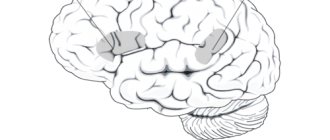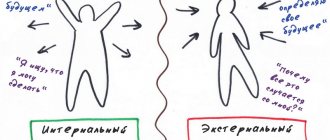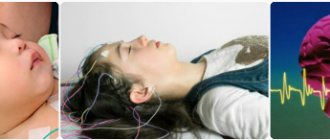Pump up your brains. Four Science-Backed Ways to Get Smarter
2020-02-16T08:00
2020-02-16T08:07
https://ria.ru/20200216/1564798980.html
Pump up your brains. Four Science-Backed Ways to Get Smarter
https://cdn21.img.ria.ru/images/152451/99/1524519902_0:3:1036:586_1036x0_80_0_0_e6c3e0afd9dc3a5c44ef47eea39485d7.jpg
RIA News
https://cdn22.img.ria.ru/i/export/ria/logo.png
RIA News
https://cdn22.img.ria.ru/i/export/ria/logo.png
MOSCOW, February 16 - RIA Novosti, Alfiya Enikeeva. Aerobics strengthens memory and improves cognitive function at any age, researchers from Columbia University (USA) recently said. And the older a person is, the more beneficial sports are for the brain.
Scientists have previously shown that neurogenesis—increasing the number of neurons and improving the functioning of synapses—is promoted not only by physical exercise. Potentially beneficial benefits include yoga and even properly selected foods.
How else can you improve brain function - in the material of RIA Novosti.
You run a lot, you think better
Experiments on laboratory animals a few years ago showed that regular physical activity improves mental abilities. Thus, in rats that were forced to run daily for seven weeks, the number of neurons in the hippocampus, an area of the brain that is also responsible for learning and memory, increased.
Moreover, the length of distances run by rodents directly correlated with the number of new nerve cells in their brain. But exercises with weights, although they contributed to an increase in the muscle mass of animals, did not have such an effect on the hippocampus.
According to American and Lebanese scientists (they also forced mice to run), during training, more brain-derived neurotrophic factor BDNF is released in the animals’ bodies. This protein is responsible for neurogenesis and plays an important role in the formation of long-term memory. It is this that probably contributes to the emergence of new neurons in the brains of animals.
In addition, aerobic exercise makes the hippocampus more elastic - blood supply improves and there are practically no inflammatory processes, which has a beneficial effect on mental abilities. Testing memory, concentration and goal setting in 132 volunteers, conducted by scientists at Columbia University, confirmed this.
After six months of regular training, all participants in the experiment showed cognitive improvements. Moreover, the older the volunteers were, the greater the effect the sport had on their brain state. However, you should not overdo it with physical exercise, French neuroscientists warn. Long hours of grueling training, on the contrary, negatively affects brain function and causes people to make rash decisions.
Yoga for the brain
According to the work of American scientists, yoga affects the brain in a similar way - it strengthens its structures associated with memory and emotion management. The results of 11 studies showed that meditation and special breathing exercises increased the volume of the hippocampus.
In addition, people who regularly practice yoga have more developed prefrontal and cingulate cortices, as well as the amygdala, compared to others. These areas are associated with planning and decision making, attention, memory, learning, and emotional regulation.
A study of the brains of 42 elderly women, some of whom had been practicing yoga regularly for 15 years, confirmed that adherents of these practices had increased thickness of the left prefrontal cortex. Moreover, compared to those who had never meditated or performed breathing exercises, the difference was significant.
According to the authors of the study, thanks to this, lovers of Eastern practices have a better chance of maintaining a clear mind in old age. In addition, meditation helps stop the degradation of gray matter and a decrease in the number of nerve connections in people suffering from constant pain.
Experienced yogis also show a significant increase in the number of neurons in the insular cortex, an area of the brain that plays an important role in pain tolerance.
Drawing improves memory
In 2014, British and Belgian researchers found that professional artists had an increased number of neurons in areas of the brain responsible for fine motor skills and visualization. Scientists have suggested that this feature may be congenital, although they did not rule out the influence of external factors, including upbringing and regular drawing lessons.
According to German neuroscientists, it is constant artistic practice that leads to an increase in the number of nerve cells and improves neural connections. They asked 28 volunteers, whose average age was about 64, to take a ten-day painting course or visit several art galleries. Before the experiment and immediately after it, all volunteers underwent an MRI scan.
It turned out that participants from the first group increased the functional density of neural connections in the prefrontal and parietal cortex - areas associated with decision making and planning complex cognitive behavior. In other words, nerve cells in these areas of the brain began to communicate better with each other.
According to scientists from Drexel University (USA), drawing improves blood flow in the brain and activates the pleasure center in the prefrontal cortex. Moreover, it does not matter at all what and how professionally a person portrays. In addition, drawing can significantly improve memory.
At least, the students who drew geometric shapes and simple patterns during the experiments (they were given lectures at this time) demonstrated better memorization of the material told.
Food for brain
According to several studies, foods containing natural antioxidants, flavonoids, can affect brain function. First of all, we are talking about coffee and dark chocolate. Thus, in an experiment by Australian scientists, participants who ate chocolate at least once a week were better able to cope with various memory and attention tasks. In the case of coffee, flavonoids protect the brain from premature aging and the accumulation of proteins in its structures, which can lead to Alzheimer's disease. And caffeine, in turn, improves memory.
Source: https://ria.ru/20200216/1564798980.html
Implementation of the plan
In order to obtain a specific result, it is not enough for a person to simply evaluate the initial data and see an image of what he wants to receive. He needs to have a plan for achieving the goal, step-by-step instructions compiled for him by his brain. At the same time, we are not necessarily talking about solving important and complex problems.
For example, having experienced a feeling of hunger, a person may realize that a bowl of hot soup is a good solution to the problem that has arisen. But if he is not able to create an algorithm of actions for himself: go to the kitchen, open the refrigerator, cook food, then his ability to know what he needs is absolutely useless.
What is the Prefrontal Cortex. Ventromedial prefrontal cortex
Anatomically, the prefrontal cortex is located in the frontal lobes of the cerebral hemispheres. The area includes 3 zones:
- posterolateral;
- median;
- orbitofrontal.
Relationships
It has the greatest number of connections with other parts of the brain. The frontal region has especially many connections with the diencephalon: the thalamus, hypothalamus. The anterior cortex also communicates with the structures of the brainstem and other areas of the cortex: the occipital, parietal and temporal.
The posterior region of the cortex is predominantly associated with areas responsible for attention, thought processes and motor acts. The inner side of the prefrontal cortex communicates with the limbic system, which is responsible for the lower and higher emotions of a person.
The anterior cortex has communications with the brain stem structures. Most of all - with the reticular formation (the structure responsible for energy balance and activation of the cortex). Therefore, the prefrontal region depends on the state of the brainstem, which regulates the activation and inhibition of the cerebral cortex.
Functions
The prefrontal cortex is responsible for higher cognitive functions in humans. This area of the brain belongs to the third functional block according to Luria, and is called “programming, regulation and control.” The cortex is responsible for the course of a person’s conscious life, for the course of mental processes.
It involves the formation of behavior patterns, adaptation to the situation and the selection of behavioral patterns to it. For example, during the course of a person’s life he gains experience—models of behavior in a certain situation.
If he finds himself in an unfamiliar environment or circumstances, the prefrontal cortex begins to “search” for previous patterns that are suitable for the situation, or forms completely new ones that are suitable for unfamiliar conditions.
Specific functions:
- Empathy is a complex emotion accessible only to humans. Empathy is formed due to a complex of externally received signals from another person. This complex includes: facial expressions, gestures, tone of voice, speed, circumstances. The prefrontal cortex synthesizes this information into a single image and forms empathy for another person.
- Emotional control and balance. Emotions are generated by subcortical structures in the diencephalon. The prefrontal cortex allows us to make sense of these emotions and control affect—something that animals cannot. This area acts as a filter and regulator of feelings.
- Reaction to a stimulus: the interval between the action of a stimulus and the response to it is the latent period, during which information about the source is “comprehended.”
- Self-awareness and the ability to be aware of past and present experiences. Planning the future, setting goals and building motivation. In addition, the prefrontal cortex not only stores experience, but also connects various links between the past, present and future. Here is an autobiography about myself.
- Intuition is the ability to penetrate into the essence of a situation through insight (sudden insight). Intuition has a physiological basis, since it is a previous experience stored in the subcortex. And due to large connections between the prefrontal cortex and subcortical structures, intuition can be realized as part of planning behavior or goals.
- Morality. Daniel Siegel, a professor of psychiatry at Los Angeles Medical School, says that the prefrontal cortex is responsible for issues related to morality and moral values.
- Volitional control of behavior.
- Forecasting future events and consequences of one's actions.
Brodmann's areas 9, 10, 11, 12, 46 and 47 are located in the prefrontal cortex.
Field 9 is responsible for:
- Short-term memory and assessment of how long ago events were, that is, a person can sensually imagine and form a mental image of how long ago it was. For example, we can imagine the time difference between yesterday's events and events ten years ago.
- Auditory perception of words.
- Identifying other people, determining their intentions and predicting behavior.
- Spatial thinking. When we imagine multidimensional figures in our minds, the 9th field is activated.
Field 10 is responsible for:
- Decision making and behavior planning.
- Establishing a logical chain of events between theories, hypotheses and assumptions.
- RAM. This phenomenon can be compared to the computer's RAM, which is responsible for performing several tasks simultaneously and storing information about them in parallel.
The 11th field is responsible for understanding the sense of smell and giving it meaning. This zone allows you to smell a certain smell and remember an event in your life. Thanks to the 11th field, emotions are associated with smells.
Field 12 helps the frontal cortex control subcortical structures.
Fields 46 and 47 are responsible for the combination of simultaneous turning of the eyes and head to the side, for singing and modulation of the movements of the speech apparatus, which allows one to clearly pronounce speech sounds.
Source: https://GolovaNeBoli.ru/nevralgiya/prefrontalnaya-kora-golovnogo-mozga-trenirovki.html
Empathy
Empathy is a term that is often mistakenly interpreted as the ability to sympathize and empathize, but in fact this feeling has a more important meaning. It allows you to see and feel how others treat you.
In the modern civilized world, empathy has only a sociocultural aspect, but for primitive man, the ability to quickly recognize an enemy or friend was the key to preserving his life. Therefore, we can safely say that the prefrontal cortex of the brain has a protective function.
Ventromedial prefrontal cortex
29.05.2018
The prefrontal cortex is the part of the brain that makes a person psychologically and socially human. Higher complex behavioral functions and the ability to think are provided by this particular area of the cerebral hemispheres. We can say that a person can think thanks to the prefrontal cortex.
Prefrontal cortex
Anatomically, the prefrontal cortex is located in the frontal lobes of the cerebral hemispheres. The area includes 3 zones:
- posterolateral;
- median;
- orbitofrontal.
How can you train your prefrontal cortex?
Training the prefrontal cortex involves reading, counting and writing. There is a technique, the points of which must be followed every day. On average, executing the entire algorithm does not take more than 5 minutes a day:
- Remembering yesterday's events. To do this, within a few minutes you need to remember yesterday’s activities: who the conversation was with, how the interlocutor was dressed, what the weather was like, what they read and what words were spoken. In general, the task is to remember as much as possible from yesterday.
- Reading aloud. You can read any small, simple article that catches your eye. The bottom line: after reading the column, you need to write down the time spent reading, after which you need to comprehend the information and retell it out loud to yourself. After just a month of daily training, memory properties improve by up to 20%.
- Writing words. You need to write not on the keyboard, but with a pen. On paper, you can write down your thoughts, an article you read, or outline your plans for the next week.
The prefrontal cortex naturally atrophies as people age. This fact is associated with senile dementia or dementia, which can develop into Alzheimer's disease. Medical fact: people whose lifestyle is associated with intellectual pursuits are less susceptible to involutional changes in the cerebral cortex.
As atrophy progresses, memory deteriorates. It is more difficult for a person to remember events from life, the speed of thinking decreases, and the consolidation of associations slows down.
This cortex also performs the function of forgetting. This is a natural process of freeing the hippocampus from “garbage” - one of the protective mechanisms of the human psyche.
Dorsolateral prefrontal cortex
This region, the dorsolateral prefrontal cortex, or posterolateral region, is the organic substrate of working or short-term memory. A 1936 study showed that in great apes in which this part of the brain was destroyed, short-term memory deteriorated.
The dorsolateral zone is involved in the formation of voluntary attention (the ability to concentrate, stability and switchability). This is where irrelevant thoughts and feelings are filtered out.
Everyone is familiar with the concept when you try to concentrate on one thing, but the wrong thoughts “climb” into your head - this is an incompleteness of the dorsolateral region.
However, when this area is activated, a person retains the ability to work on one idea or thought for a long time, without being distracted by extraneous stimuli.
This area forms a person’s sense of justice. This site made it possible for the human species to develop the concept of justice, the feeling of guilt and blaming other people, and the imposition of a sentence for assistance in wrongful actions.
Source:
A certain area of the cerebral cortex is responsible for the emotional component of people’s moral and ethical assessments.
Source: https://mozgi-doc.ru/terminy/ventromedialnaya-prefrontalnaya-kora-golovnogo-mozga.html
Criticality
One of the most important diagnostic factors used by psychiatrists is a person’s ability to be critical. At the same time, it is important to evaluate with an adequate level of criticality both the events occurring around you, the actions of other people, and your own actions.
As a rule, people who have mental illness or whose development of the prefrontal cortex is impaired are not capable of self-criticism and evaluate their behavior as consistent with the norm, even in the most crazy actions.
Self-control
The concept of self-control is very closely related to emotions, the level of criticality and planning of actions. For example, if a person suddenly wants to sing a song loudly in the middle of the street, his prefrontal cortex will most likely prevent him from doing this, slowing down the impulse, which would be perceived by others as the act of an out-of-control individual.
But when a person has an addiction, that is, a strong dependence on a habit, the control of the prefrontal cortex may weaken. For example, a heavy smoker may light a cigarette indoors, despite the ban, because the core of the brain demands to get its dose of pleasure.










